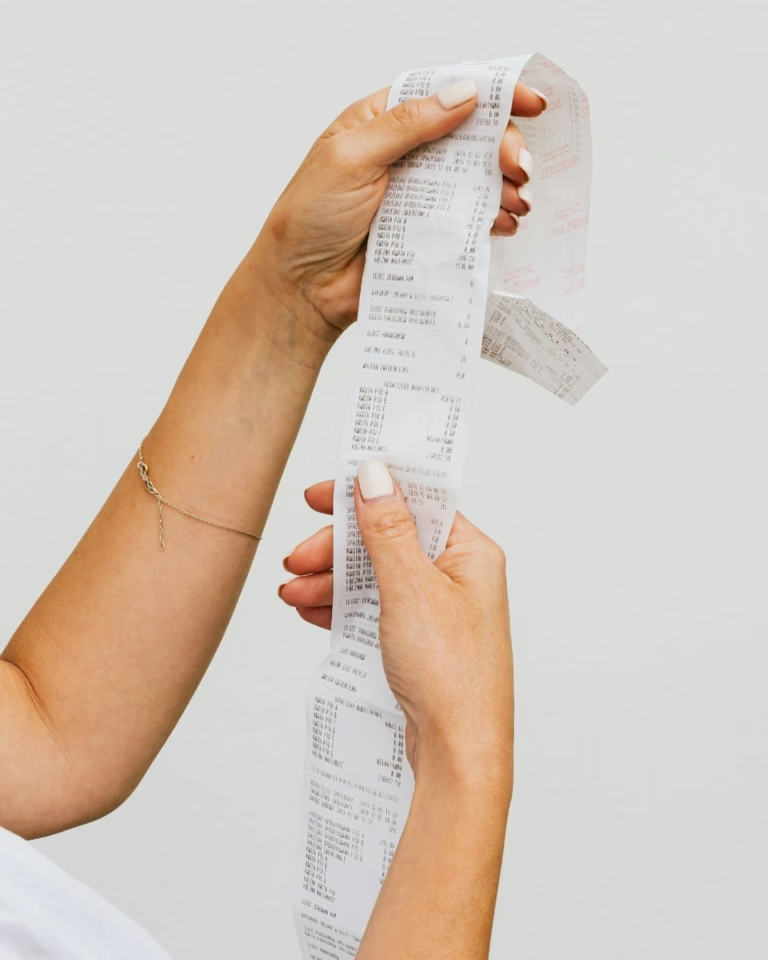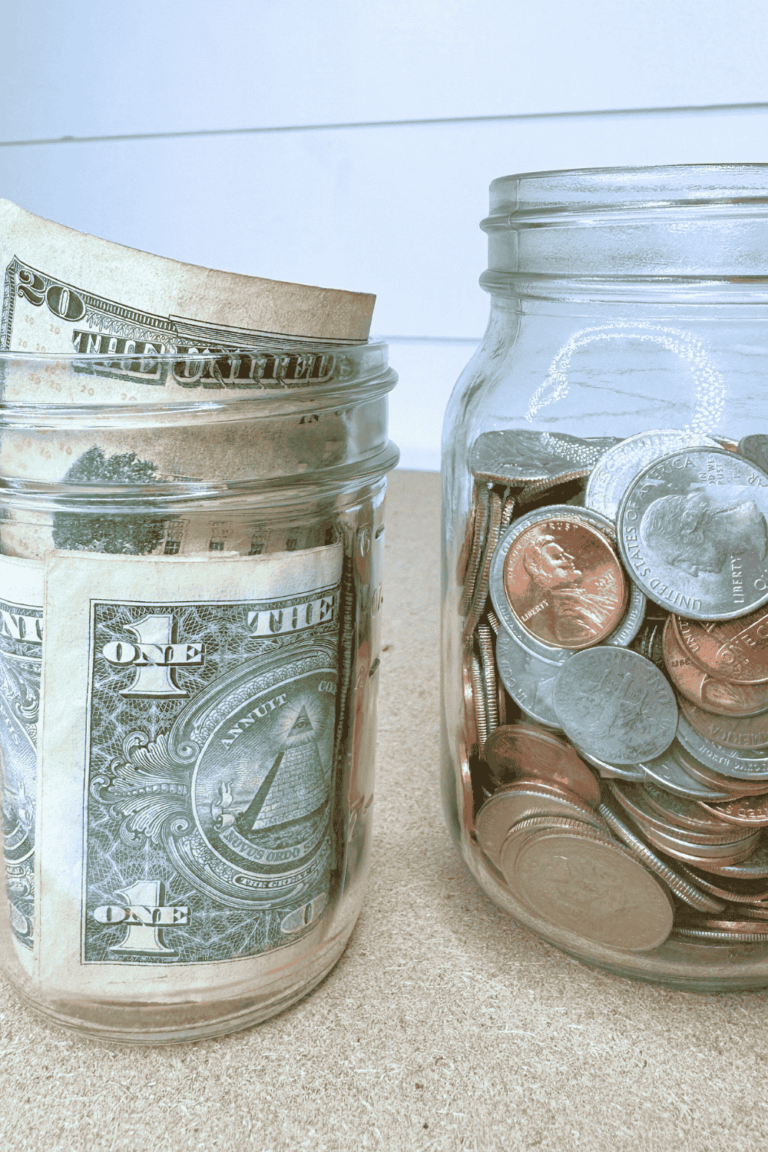9 Smart Money Saving Challenge Ideas to Save and Pay Off Debt
This site contains affiliate links, view the disclaimer for more information.
This post breaks down what a money saving plan is, followed by 9 smart money saving challenge ideas that you can use to kickstart your journey toward financial freedom.

Welcome to part 2 of 10 in my personal finance blog series, where we dive into how a money saving plan can be your key to successfully transitioning from debt to savings. If you’re just joining us, be sure to check out the first post for a deeper dive into why a money saving plan is so crucial. It’ll lay the foundation for everything we’re discussing moving forward.
Alright, if you’re here, you’re probably thinking, “I know I need a money saving plan, but where do I even start?” Trust me, I’ve been there. I’m someone who loves having a plan for everything, yet I was still overwhelmed when I first started. What did my “plan” even need to look like? It took some trial and error, but let me tell you: once I had a solid plan in place, everything started to feel a lot more manageable. Honestly, I don’t think I could’ve paid off my $12,000 debt in just 6 months without it.
In this post, we’ll break down exactly what a money saving plan is and, more importantly, how to get started with 9 smart and simple money saving challenge ideas.
It’s not as complicated as it sounds—I promise. Let’s dive in!
9 Smart Money Saving Challenge Ideas
Let me start by saying, there are so many money saving challenge ideas out there—it can feel overwhelming, right? I could name off a million of them, but here’s the thing: without understanding why you’re doing it, it’s easy to lose motivation and quit. As with anything in life—whether it’s running a marathon or saving for a vacation, if you don’t have a clear “why” to keep you moving, it’s hard to stick with it.
So before we dive into these 9 money saving challenges, take a moment to reflect: Why are you here? What’s pushing you to start saving? In part 1 of this blog series, we talked about why having a money saving plan is so important, and now it’s time to dig into your personal why. What is it about saving money that’s going to keep you excited and motivated?
For me, beyond just the basic need to pay bills, a solid money saving plan meant I could still enjoy the little things I love—like sushi dates and the occasional Starbucks run—without feeling guilty or stressing over my finances. (Because yes, I love my sushi, and no, I’m not giving it up!) Think about what those little things are for you—what makes you smile, and how can saving money give you the freedom to enjoy them guilt-free?
Alright, ready to jump back in? Let’s do it.
Don’t forget to pin this!
Make sure to pin this image here and save it to your Pinterest board. That way you can easily come back to this page to learn what a money saving plan is, followed by 9 smart money saving challenge ideas to get started.
What is a money saving plan?
A money saving plan is essentially your blueprint for staying financially afloat, even when life throws you curveballs like a flat tire or a visit to urgent care. Having a solid money saving plan means having one that actually makes sense for you. It has to fit with your lifestyle and be realistic–otherwise you’ll likely feel tempted to give up after only your first month.
Creating your money saving plan doesn’t have to be this big, complex thing. Let’s keep it simple. If you know you can only save $100 a month, don’t beat yourself up and go trying to save $1,000. Maybe by the next month you’ll be able to swing $200, $500, or more. You can work up toward that $1,000 a month if that’s your ideal monthly saving amount. The beauty of a money saving plan is that it’s totally unique to you and your situation. And guess what? It doesn’t have to look the same for the next three years. Honestly, it doesn’t even have to look the same in the next three months. We’ll dive more into this in part 3 of the blog series: 10 steps to transitioning from debt to savings. But for now, we’ll stick to the whole reason you’re here—how to start saving money!
9 Money Saving Challenge Ideas to Kickstart Your Journey
drumroll The moment you’ve been waiting for! Now that we’ve covered what a money saving plan is and why it’s a game-changer… Here are 9 smart money saving challenge ideas you can try—no major sacrifices required, just smart ways to start saving! I’ve even ordered them based on difficulty to help you decide where it’s best to start.
- Easy = Great for beginners or anyone looking for simple ways to start saving without a lot of effort. Perfect for stacking on top of other challenges as you build momentum.
- Medium = Requires a bit more effort—ideal for those who are starting to build their savings but might not have a ton of room to save just yet.
- Hard = This one’s for those ready to take their savings to the next level. It’s a bit more challenging but great for making bigger strides in your savings.
Psst: Challenges 1, 6 and 8 were key toward my success. They helped me pay off $12,000 in debt in just 6 months and remain debt-free ever since. Trust me, these really work!
Easy
1. Free Money Straight to Savings Challenge
Whenever you earn cash back, rewards, or interest (like from a savings account or dividends), put it straight into your savings. It’s “free money” that you’re already getting, so why not let it build up in your account instead of spending it? Every little bit adds up over time!
2. Round-Up Savings Challenge
If your bank allows it, automatically round up your purchases to the nearest dollar and send that spare change into your savings account. For example, if you spend $4.50 on coffee, your bank rounds it to $5 and sends the $0.50 difference to your savings. It’s like saving without thinking about it! Not to mention, if you’re like me and prefer a flat-dollar amount for your purchases, this challenge is a total win-win.
3. The Swear Jar (or Bad Habits Jar)
We’ve all heard of the fun “swear jar” method. But this can be generalized for any bad habits that you want to break. Try out this easy challenge by grabbing a jar and committing to i.e. $1 for every time you do your bad habit (for those who don’t carry cash/change, simply move a dollar into your savings account each time). Common things people try to stop include: drinking alcohol, drinking caffeine, skipping their workout, ordering takeout, online purchases, biting their nails, staying up late, and being on their phone too much. Think about one or two things you want to stop doing, and every time you do it, put a fixed amount into your savings. Cheers for clever ways to save while breaking bad habits!
Find Smart Tools to Budget Better, Save More, and Work From Anywhere
Ready to make life (and money management) a little easier? Check out my favorite tools, books, and essentials for budgeting smarter, building real savings, organizing your home office, and thriving in remote work—so you can create the flexible lifestyle you’re working toward.
Medium
4. 52-Week Dollar Saving Challenge
The idea is simple. On Week 1, save $1. On Week 2, save $2, and so on. Each week, you will save a little more than the last week. By week 52, you should be saving $52. When you add up your total savings from Week 1 to Week 52, you will have saved up $1,378. You can even reverse this challenge and start by saving $52, then gradually decrease over the year. This could easily cover a fun outing or weekend getaway, depending on your family size.
You can use this 52-week money saving binder to keep your savings organized. It also comes with 4 saving challenge trackers to choose from. Use the DIY tracker to save $1,378 this year like we talked about above, or try out one of their more advanced trackers to save up to $10,000!
5. Weekly Skip & Save Challenge
Pick one thing you buy regularly, like your morning coffee, gum, or even a little online splurge. Each week, put that money into your savings instead. Let’s say you spend about $7 a week on coffee. If every week you skipped your coffee run and saved the $7 instead, by the end of the year that’s $364 saved. That could help cover a surprise expense like a car repair or unexpected medical bill!
6. No-Spend Days Challenge
It’s time to go grab your calendar! Choose a day—or a few days—each week where you’re committing to spending absolutely nothing. Most people will tell you to pick the days you always spend on and make those your no-spend days. But honestly, I think that’s setting yourself up for frustration. Instead, focus on reducing the total number of days you spend. For example, if weekends are your usual time to splurge, pick just one day to go without spending. It’s a simple yet effective way to start building savings without feeling like you’re depriving yourself.
If you don’t already have a calendar or just want something to separate to track your savings with, here’s a cheap no spend challenge tracker you can use each month.
When I first did this, I realized that cutting back to spending only 4-8 times a month was a total win (and yes, I still got to enjoy my Wednesday Sushi nights and Saturday shopping sprees—yay!). So, choose a couple of days each month to hold off on spending, and stick to them. The goal here isn’t to eliminate spending entirely—it’s just about reducing the number of days you’re spending money. This small change can make a big difference for your finances.
“The hardest part about saving money is starting. The easiest part is realizing how much you can save once you do.”
anon
Hard
7. 12-Month Hundred Dollar Saving Challenge
This is similar to the 52-week money saving challenge, but instead we’re going to look at this in monthly spurts. Each month, increase your savings by $100. Start with $100 in Month 1, $200 in Month 2, and continue until you’re saving $1,200 in Month 12. By the end of the year, you’ll have saved $7,800. If the holidays make saving tough, try reversing the challenge and save larger amounts early in the year. This challenge is perfect for those who want to boost their savings quickly.
8. Automated Savings Challenge
Choose a fixed amount to save every month and set up automated payments from your paycheck directly to your savings account. You can even set up minimal transfers from your savings to your checking account to ensure that you are not transferring money out of your savings whenever you want. (for example, 6 maximum transfers per month allowed before receiving a penalty from the bank). This increased level of commitment and discipline can be tough, but ultimately sets you up for success in achieving your financial goals. If you commit to $200 a month, this could save you $2,400 a year! For the more aggressive savers, saving $2,000 a month could save you $24,000 a year!
9. Randomized Savings Challenge
Add a little excitement to your savings! Write down 12 varying amounts of money (i.e. $50, $100, $200, etc.) on pieces of paper, fold them up, and place them in a jar. Each month, randomly draw one note and save that amount. This keeps things flexible and makes saving feel a little like a fun surprise while still being committed to the goal.
Now, to make this challenging? Set a minimum amount for each month that you must save so by the end of the year, you’re hitting a financial goal (i.e. to achieve $5,000, you may need to save between $400-800 per month). Important reminder to set yourself up for success by sticking to dollar values that are doable given your financial state.
I highly recommend using a budget binder to keep your savings organized and stay on track financially throughout the year. This binder is perfect because it includes cash envelopes, premade category labels, and monthly budgeting sheets. Even if you prefer saving digitally, you can still use the cash envelopes by simply noting the amount saved on a small piece of paper and placing it inside the envelope.
Pro Tip: Use AI to Make Saving Money Easier!
Let’s say you’re taking on the Randomized Savings Challenge and you know you want to save $5,000 this year, but you don’t want to exceed $800 in any given month. No worries—let AI do the math for you! Just ask ChatGPT something like, “I want to save $5,000 this year, but I can’t save more than $800 a month. Can you break it down into 12 varying payments for me?” It’s a quick, easy and FREE way to get your savings plan sorted without any stress over numbers!
Conclusion
Having a money saving plan is the key to transforming your financial future—it helps you pay off debt and still enjoy the things that make life fun, without constantly stressing over money. Now that you’ve got 9 money saving challenge ideas to get started, it’s time to kick things up a notch.
Next up in the blog series
Tell Us Your Money Saving Tips!
Got any unique or fun ways you save money? Share your tips and challenges in the comments below—we’d love to hear how you’re making savings a part of your routine!




